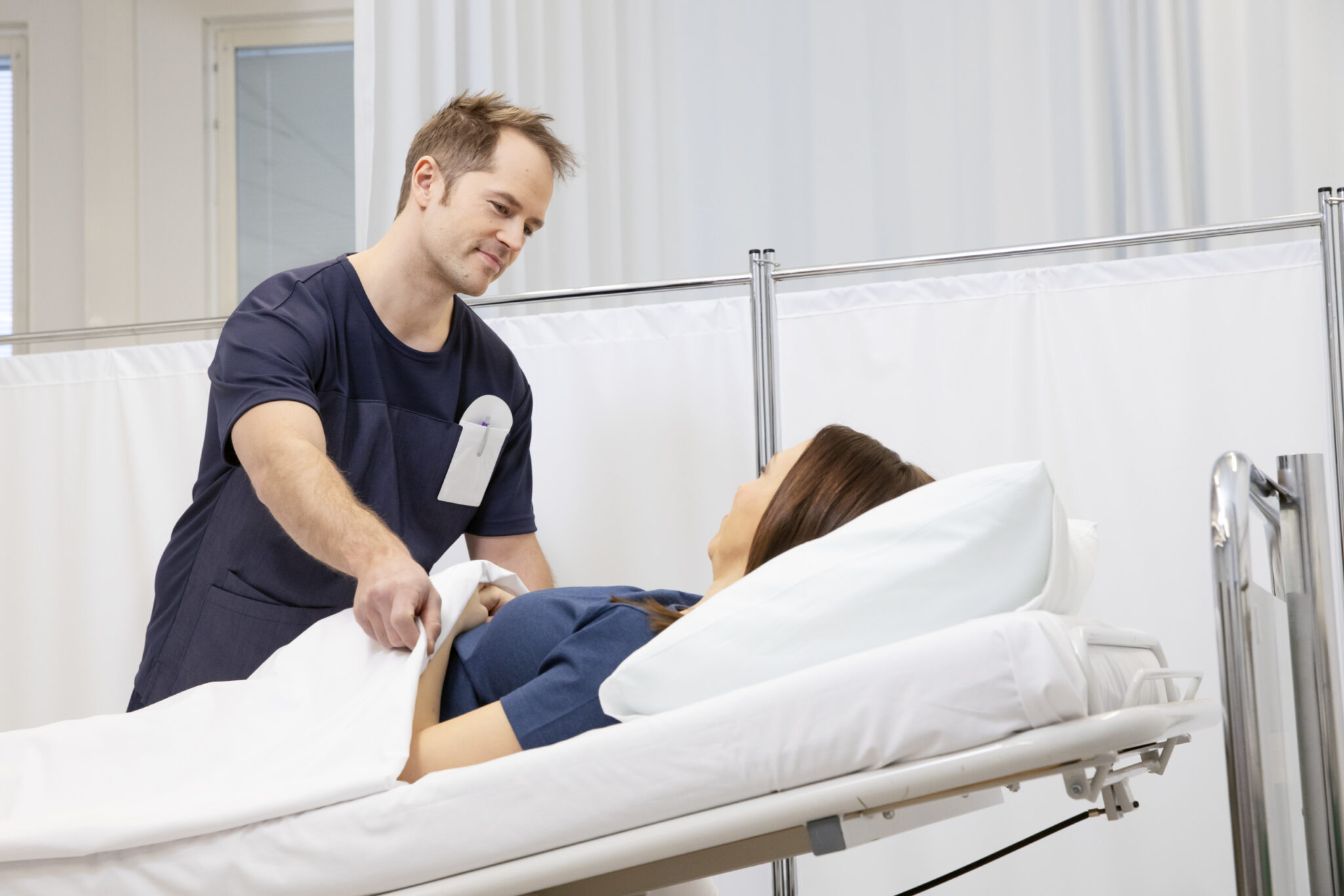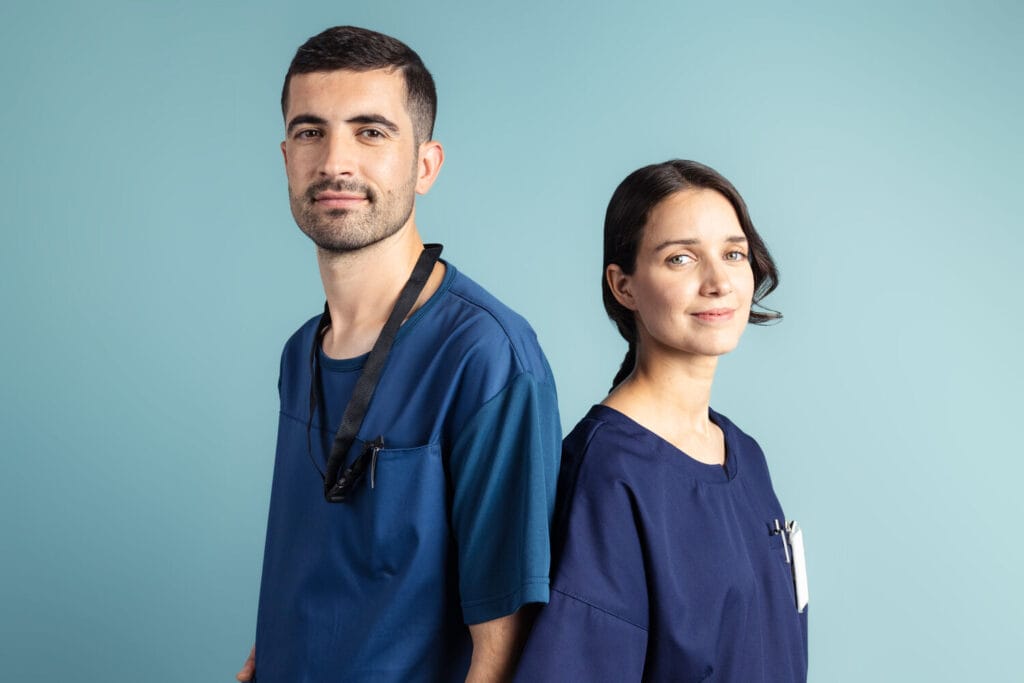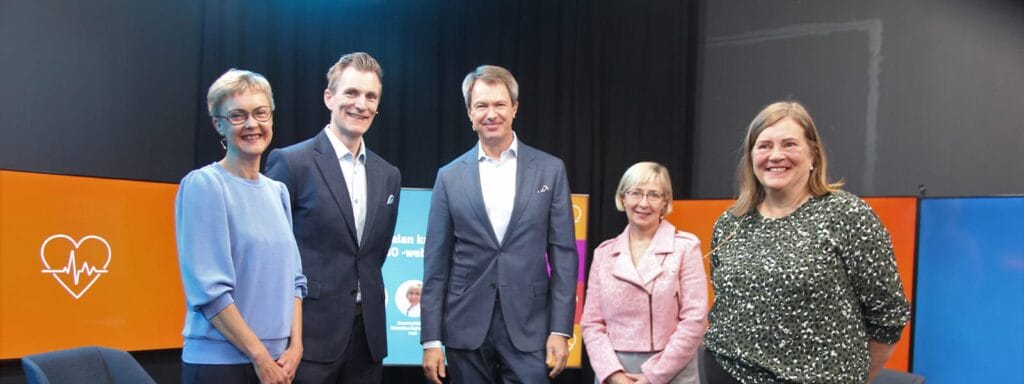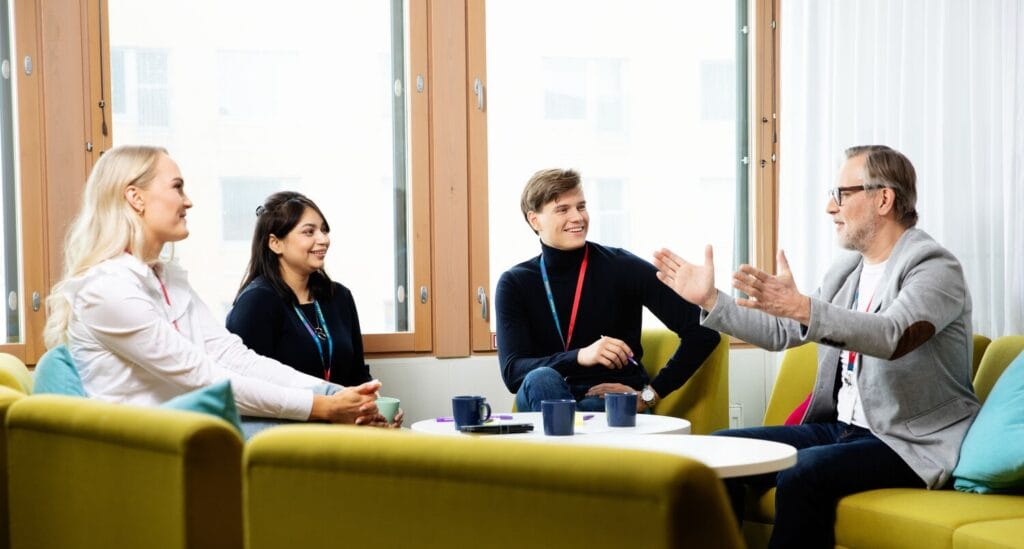
Prof. Dr Katie Laird on preventing healthcare-acquired infections

While many industries faced unprecedented disruption due to the global pandemic, the healthcare industry is uniquely affected, given the nature of the crisis. Innovation and growth need to continue unabated to equip the modern healthcare systems to rise to the challenges presented by COVID-19 and the economic fallout from its spread. We hosted Prof. Dr Katie Laird, Professor of Microbiology in the School of Pharmacy and Head of the Infectious Disease Research Group at De Montfort University, at the annual Healthcare meet 2022 in Helsinki.
Research by Prof. Dr Katie Laird is centred on preventing transmission of healthcare-acquired infections, including developing novel antimicrobials. A particular focus of the research by Prof Dr Katie Laird is on the role of healthcare textiles as fomites, and recently her research emphasis has been on the potential transmission of coronavirus via textiles.
What is the importance of healthcare textiles in patient safety, Prof. Dr Katie Laird?
Healthcare textiles can carry microorganisms. However, if they’re appropriately laundered, they’re completely safe. So realistically, we need to ensure that all health care and textiles are laundered and maintained well. Ideally they should be industrially laundered because it takes out factors of behaviour from individuals. If it goes through industrial laundering, it is a guaranteed monitored process. Health care textiles can also play a role in PPE as well. Different types of textiles can be used for PPE.
What role do healthcare uniforms play in the chain of infection transmission?
As I mentioned, our research has shown that healthcare textiles carry microorganisms and can transfer to other surfaces. In the case of coronavirus, we looked at plastic surfaces. We’ve also looked at stainless steel surfaces from leathers, for instance, for bacterial contamination. And we’ve also shown transfer to other surfaces both before and during the wash.
So, they potentially have a role in the transmission of microorganisms. However, there’s been no direct link between textiles and a patient having an infection to date. That said, hospital policies like the ‘above the elbow’ policy ensure that the textiles are not in close contact with the patients.
What are the potential risks and compliance issues with the domestic laundering of healthcare uniforms?
Nurses domestically wash their uniforms in the UK, parts of the US, and the Republic of Ireland. Obviously, that brings in behavioural differences and knowledge differences between the nurses. Our research showed back in 2015, for instance, that a higher majority, say around 47%, of nurses were washing below the recommended 60-degree wash. However, during the pandemic, this significantly decreased.
There were only around 17% that were not necessarily following guidelines. Alas, there are different issues that come into play as well. For instance, do people use a rapid wash at 60 degrees. We’ve shown that this doesn’t actually reach that temperature and doesn’t necessarily decontaminate the textiles? What types of detergents are they using? In the load, are there other garments the microorganisms may cross infect?
So there are many different parameters. And for instance, when the nurses are wearing their uniform, and it’s contaminated, and they go into the car or the domestic environment, is there any transfer during that period? So when we talk about industrial laundry, that’s very much monitored. There are standards in place to ensure that those infection control procedures are there.
Prof. Dr Katie Laird, please share some findings from your research on the survival of coronavirus on textiles.
We looked at coronavirus on textiles, and our virologist, Dr Maitreyi Shivkumar, had to set up a model for SARS-CoV-2. It is called OC43. We had to ensure that this model behaves similarly to SARS-CoV-2. So once that model was set up, we could start looking at the contamination of textiles and how to decontaminate them.
The research showed that coronavirus could survive on polyester fibres for up to 72 hours. On cotton it was around 24 hours, and polycotton was 6 hours. We believe there was some potential antiviral finish on that polycotton. It was just the normal finishing process. Our findings established that the coronavirus could last on textiles for several hours, if not days.
Next, we looked at its potential to cross-contaminate. We found that it could cross-contaminate both onto hard surfaces like plastic and other porous surfaces like textiles within that period of time as well. We also looked at its survival during the wash process. In the wash process, we found lower temperatures than we’ve seen with bacteria. So, 40 degrees rather than 60 degrees was able to remove the virus from the textiles.
We demonstrated that it could be readily removed in a domestic machine, an industrial machine or an on-premises laundry. With coronavirus, the risk really creeps in at the point between the ward and the washer. That’s where the cross-contamination risks are.
Has the pandemic changed healthcare workers’ behaviour towards uniform laundering policies?
I believe so. In 2015, when we surveyed nurses, we found that 47% said they were washing below 60 degrees. About 250 respondents participated in this study. There was a higher ratio of people washing a mixed load with other items in the wash. When we repeated that survey during the pandemic, there was a much higher percentage of people following the guidelines.
However, a large percentage of the nurses would prefer industrial washing. They were much more aware of the situation and the potential risks from their uniforms coming into the home. Many of them were changing on-site at the hospital. Still, there weren’t necessarily facilities for them. Some of them were changing on their doorsteps before they entered the home. This was a different behaviour to that which we saw from before the pandemic.
Can the selection of fibres play a role in reducing microorganism survival on healthcare uniforms?
Yes, absolutely. Because with bacteria, we’ve shown that the microbes could survive for longer. In fact, for up to 21 days on any sort of cotton fibre. It’s much shorter on polyester fibre. If we were talking about Staphylococcus aureus or our E. coli, then the fibre choice should be more around the polyester type fibre. The reason behind, we believe to be that the moisture and the potential nutrients in the cotton fibres allow those bacteria to survive for longer.
However, when we’re talking about the coronavirus, we’ve learnt that cotton fibres offer a much shorter survival time because we believe they are desiccated. Hence, they dry out the virus with absorption. And we saw something similar when we looked at leather. However, the survival span is longer on polyester, where the coronavirus sits on the surface and does not dry out.
Depending on the microorganism in the subject, the ideal fibre type changes. We need a very absorbent, manmade, smooth, finished fibre that would reduce the survival time of both microorganisms.
A Germ’s journey – Interactive learning resources and behavioural training is a great initiative – Can you throw some light on the initiative, Prof. Dr Katie Laird?
Yes. I’m a co-founder alongside my colleague Prof Sarah Younie. She’s an educationalist. We have developed a Germ’s journey, an educational resource on handwashing and germs for young children. And we’ve developed a series of books, web games, videos, workshops, and posters for parents and children. They’re all freely available at the point of access via our website (www.germsjourney.com).
We’ve donated 6000 books across three continents, and the books are designed to be culturally relevant. We developed one for northern India, which is in Gujarati. In the material we ensured that the images, the toilets, and the food were culturally relevant. We did the same with West Africa. So we’ve developed these books for different areas. We have also worked in the slums in India to help with community schooling around health hygiene and in relatively deprived areas of Sierra Leone.
With out work we have reached well over 200,000 people now with the resources. We’ve managed to show an increase in knowledge in children, some of whom are illiterate. The focus is on very young children or those that haven’t necessarily had a formal education. So increased understanding of germ transfer, whether that’s respiratory or sort of more bacterial, ones you find on your hands by about 55%.
We have conducted studies with a psychologist to see if there’s been a change in behaviour in handwashing. And we have shown particularly areas which children miss, so under the nails, between the fingers. Their behaviour has changed. We have seen about a 25% increase in those areas of handwashing. There is one feedback that stands out to me. We went back to India after the resources had been in place for a year. Then, the teachers reported that they were now able to teach this topic better than before because of the resources we donated.
But also, they were seeing a 100% reduction in illness caused by lack of handwashing. The children had actually gone out to their grandparents and their aunts and uncles, telling them about the hygiene practices they had learnt. So, we’ve managed to spread the word quite extensively. During the coronavirus as well, the publishers wanted us to develop a book which was more based on respiratory. We made that initially into an e-book which was freely available to anyone that needed to download it. It has prompts for the adults, like the difference between a bacteria and a virus.
So we were teaching the adults simultaneously as we were teaching the children. And the latest endeavour has been a book for care homes for those living with Dementia. We want to enable them to relearn health hygiene habits alongside inter-generational policy with children.




